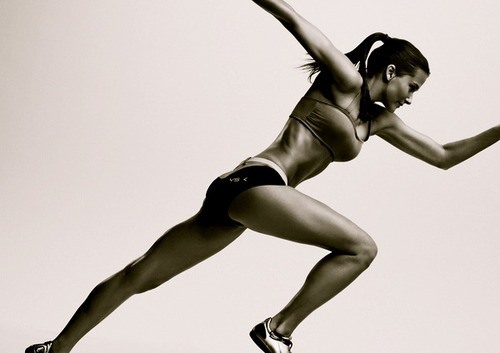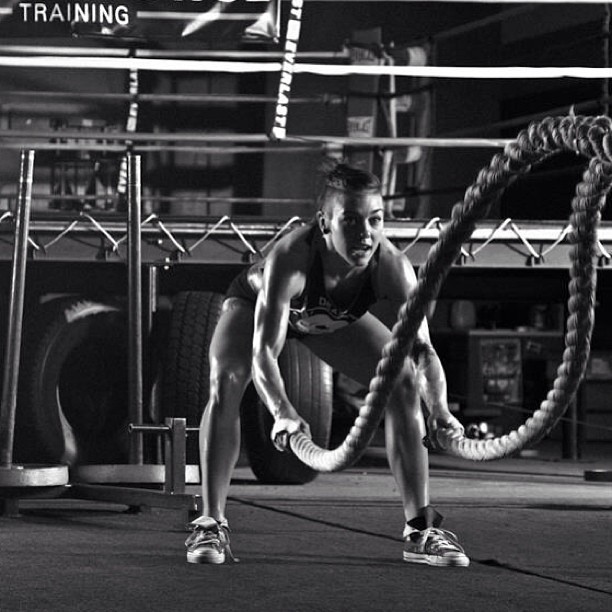Everything You Need To Know About HIIT Workout
There is a new trend in anaerobic exercises. Why is so many people doing it? Well HIIT or High-intensity interval training , also called high intensity intermittent exercise (HIIE) or sprint interval training (SIT), is a form of interval training, an exercise strategy alternating short periods of intense anaerobic exercise with less-intense recovery periods. HIIT is a great form of cardiovascular exercise.

What are the benefits of HIIT Workouts?
- It’s highly efficient! This type of workouts are the best for a busy schedule. Whether you want to squeeze in a workout during your lunch break or to get in shape for a fast-approaching event. Research shows you can achieve more progress in a mere 15 minutes of interval training (done three times a week) than the girl jogging on the treadmill for an hour. According to a study made by the American College of Sports Medicine , just 2 weeks of high-intensity intervals improves your aerobic capacity as much as 6 to 8 weeks of endurance training.
- You will burn more fat. With HIIT training you will exercise at around 80-90% of your maximum heart rate, compared to the low intense anaerobic exercises where you use 60-70% of their maximum heart rate. You will have a after burn effect for a period of 16 to 24 hours post-workout, therefore you will burning more fat.
- You can do whenever you want and without any equipment. A mix of burpees, high knees, jumping jacks or sprints will get your heart rate fast.
- You retain more muscle! Anyone who has been on a diet knows that it’s hard to not lose muscle mass along with fat. While steady state cardio seems to encourage muscle loss, studies show that both weight training and HIIT workouts allow dieters to preserve their hard earned muscles while ensuring most of the weight lost comes from fat stores. It’s a win-win!
This is why HIIT is so beneficial…
It burns more fat, preserves muscle and is a massive time saver if your schedule is consumed with work and family priorities.
Aside from toning you up, HIIT has also been shown to contain a number of side benefits that makes the workout worthwhile even if you’re not particularly interested in achieving a better body definition.
The HIIT exercises I usually recommend to my clients are Tabata Training. It’s one of the most popular forms of HIIT training. It consists of eight rounds of ultra high intensity exercises in a specific 20 seconds on and 10 seconds off interval. It is usually a four minutes duration but those four minutes may well push your body to its absolute limit.
A sample of a HIIT Routine may look like this:
[one_third_first]Jumping Squats[/one_third_first][one_third]20 seconds on[/one_third][one_third_last]10 seconds rest[/one_third_last][one_third_first]Burpees[/one_third_first][one_third]20 seconds on[/one_third][one_third_last]10 seconds rest[/one_third_last][one_third_first]Jumping Jacks[/one_third_first][one_third]20 seconds on[/one_third][one_third_last]10 seconds rest[/one_third_last][one_third_first]High Knees[/one_third_first][one_third]20 seconds on[/one_third][one_third_last]10 seconds rest[/one_third_last] Beginners perform this routine for four minutes. If you’re more advanced increase the duration.
This is just a sample there are many ways you can perform this.
How Frequently Should You Do HIIT Workouts?

The total amount of HIIT exercise you should do per week depends on your immediate goals and what other types of exercise you’re doing.
If you’re looking to lose fat quickly, the best way to do it is right before you get out of the bed and before consuming your first meal of the day, this forces your body to expend body fat as fuel… Alternatively, you can also perform HIIT right after your strength training workout when the body has just used up its glycogen stores.

Just keep in mind that this form of anaerobic exercise is more difficult to perform than the others even if you are in good shape this will challenge you. Just start by doing it at your own pace. The best approach is to do only four minutes and start increasing when you get more comfortable.
Another way to make HIIT easier is by shortening the exercise duration while lengthening the rest time. This may be something like a 20 second exercise and 40 second rest.
And of course you can also perform an easier variation of most exercises.
